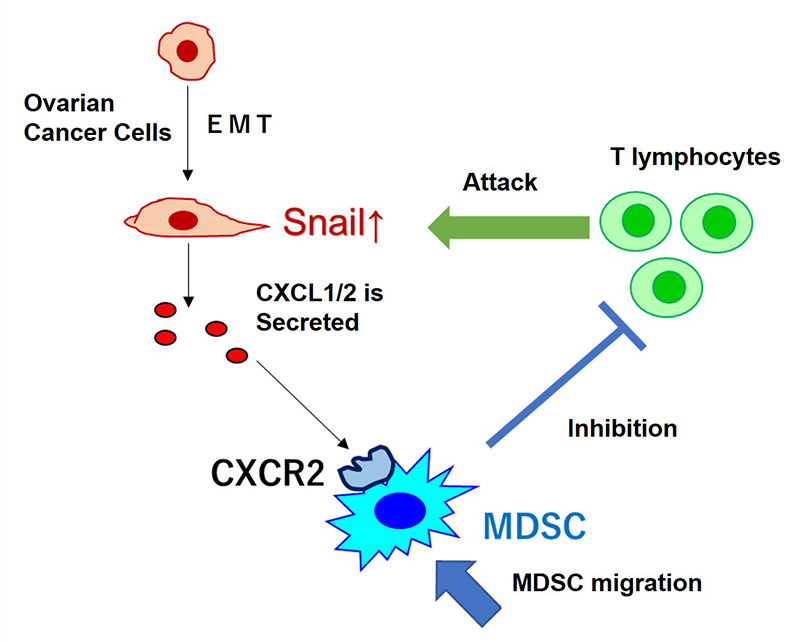Kyoto University investigates ovarian cancer immune escape and invasiveness
Kyoto, Japan - How do ovarian cancer cells escape immune cell detection and contribute to cancer metastasis?
Studies have shown that as cancer cells acquire traits of invasiveness, they change structurally from having epithelial features to acquiring a so-called mesenchymal phenotype. This transition -- epithelial-to-mesenchymal transition, or EMT -- result in the cells traveling to other organs and tissues.
Additionally, cancer cells owe their resilience to an accumulation of immunosuppressive molecules, resulting in an ability to avoid detection from immune cells that would normally remove abnormalities.
"EMT and immune escape are areas of significant focus for cancer researchers, but the relationship between the two has not been well studied," explains Mana Taki, one of the lead authors of the paper appearing in Nature Communications . "That's why we decided to look into EMT-related genes on tumor immunity."
The gene they chose was the transcription factor 'Snail', known to be essential in EMT and significantly up-regulated in ovarian cancers with high mortality rates.
When testing in model animals, the team found that if they inhibited Snail, cancer growth was significantly reduced. However, immunodeficient model animals showed little suppression of cancer when inhibited, giving indication of a previously unknown mechanism involving Snail and cancer immunity.
"After extensive analysis, we found that when Snail is suppressed it also reduces the expression of a ligand for the protein called C-X-C motif receptor 2, or CXCR2," continues Taki. "These receptors are known to attract cells called MDSCs, or myeloid-derived suppressor cells. Cancer tissue with high levels of MDSCs are more resistant to therapies."
To see if CXCR2 could be an effective target for reduced ovarian tumor growth, the group blocked the protein receptor, subsequently finding reduced infiltration of MDSCs to the tumors, along with decreased growth.
The Kyoto University Hospital and School of Medicine team expects that CXCR2-targeting drugs could be a promising treatment option for ovarian cancer, and hopes their research may lead to future clinical trials. Fortunately, CXCR2-targeting drugs are already being tested in patients with asthma and pulmonary disease.
"EMT and cancer have been studied for many years, but primarily in relation to metastases, so the link to immunity was not as well understood," concludes Kaoru Akibo, study co-author. "Our work combines two hallmarks of cancer research -- EMT and immune escape -- with the major transcription factor Snail."

As ovarian cancer cells undergo EMT Snail is unregulated and CXCL1/2 is secreted. MDSC then migrates to the cancer tissue to induce immune escape (Kyoto University / Kaoru Akibo)
Paper information
【DOI】 https://doi.org/10.1038/s41467-018-03966-7
【KURENAI ACCESS URL】 http://hdl.handle.net/2433/230942
Mana Taki, Kaoru Abiko, Tsukasa Baba, Junzo Hamanishi, Ken Yamaguchi, Ryusuke Murakami, Koji Yamanoi, Naoki Horikawa, Yuko Hosoe, Eijiro Nakamura, Aiko Sugiyama, Masaki Mandai, Ikuo Konishi, Noriomi Matsumura (2018). Snail promotes ovarian cancer progression by recruiting myeloid-derived suppressor cells via CXCR2 ligand upregulation. Nature Communications, 9, 1685.





